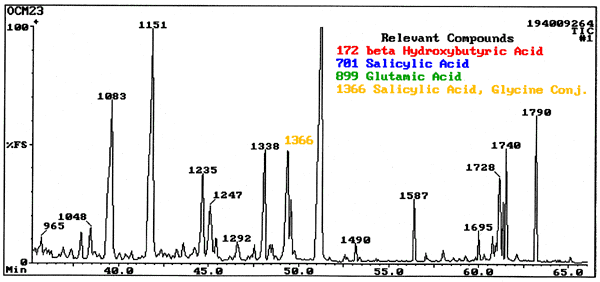

Renal excretion is more important in overdose situations when liver enzymes are saturated

As liver enzymes become saturated in overdoses, metabolism converts to zero-order kinetics (fixed)Ī small amount is excreted unchanged via kidneys. Salicylate primarily undergoes phase 2 metabolism in the liver through first-order kinetics (dose dependent). It has a pKa of 3, meaning it will be uncharged in acidic environments (stomach) and will be more readily absorbedĪbsorption in overdose situations may be delayed due to bezoar formation or pyloric sphincter spasm Its mechanism of action is to irreversibly inactivate the cyclooxgenase enzyme through acetylation, thereby suppressing prostaglandin and thromboxane synthesis.Īspirin has a half life of 15 min and is quickly hydrolyzed to salicylate in both the gastrointestinal tract and serum. Generally, doses less than 300mg/kg result in mild toxicity, 300-500 mg/kg causes moderate toxicity, and greater than 500mg/kg will result in death 2Īspirin is a type of nonsteroidal anti-inflammatory drug (NSAID) which also has anti-platelet effects Most pediatric cases of salicylate poisoning occur with intentional ingestion in adolescents 3 Salicylates were originally derived from salicin, a component of willow bark, which was used by Hippocrates to treat fever and pain 1Īspirin, also known as acetylsalicylic acid ( ASA), is the most well known salicylate and responsible for the majority of salicylate poisonings.Īspirin poisoning has significantly decreased in the past few decades because of its association with Reye Syndrome (see below), limitation of tablets per bottle, and child resistant packaging 2,3

Diuresis, hemodialysis, and hemoperfusion are effective, but the latter two rarely are necessary.Salicylates are compounds derived from salicylic acid. Fluid and electrolyte management is the mainstay of therapy. Blood level determinations are good prognostic indicators for acute ingestions but are of limited value in chronic, therapeutically induced salicylism. For acute ingestions, the magnitude of the poisoning is clearly dose related. With chronic, therapeutically induced salicylism, these symptoms may be mistaken for symptoms resulting from the illness for which the salicylates were administered. Alkalemia or acidemia, alkaluria or aciduria, hypoglycemia or hyperglycemia, and water and electrolyte imbalances may occur nausea, vomiting, tinnitus, hyperpnea, hyperpyrexia, disorientation, coma, and/or convulsions are common. Salicylate poisoning remains a major clinical hazard, usually resulting from accidental ingestions in preschool children, suicidal overdoses in adults and teenagers, and therapeutically acquired intoxication in all ages.


 0 kommentar(er)
0 kommentar(er)
